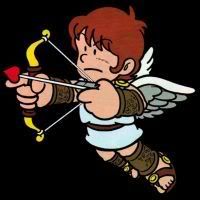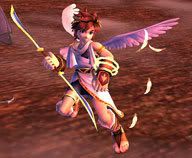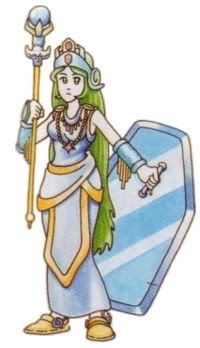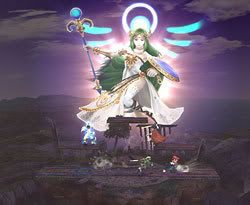Moero! Nekketsu Rhythm Damashii: Osu! Tatakae! Ouendan 2 is officially on Japanese shelves, meaning that it's only a matter of time before import shops begin getting their own inventory and filling preorders. The original Ouendan and its western spin-off Elite Beat Agents are two of my favorite handheld games, and either one or the other has been entrenched in my DS for most of the past six months, ever since the release of EBA. I hope to have my own copy of Ouendan 2 within the next couple of weeks if all goes well with my preorder, but I thougth that I would celebrate the sequel's release by looking back at what I consider to be the five best stages from each game. Let us begin, shall we?
Elite Beat Agents: Top Five Stages
5. Canned Heat:
Elite Beat Agents was my introduction to the Ouendan mode of gameplay, and for a while, I thought I had it all figured out. Tap, drag, and spin to the music. The stages were challenging, but with a little practice, I could get through them with little trouble. Then Canned Heat came along and delivered a needed blow to my ego. Whatever it was, the tempo, the beat pattern, or what have you, Canned Heat on Cruisin' was the first stage in the game that I could honestly consider devious. I also love those high kicks the agents do towards the end of the stage for that extra level of flash, and hey, any stage with a ninja has got to be cool.
4. Material Girl:
For being a game developed in Japan, the designers really nailed a good parody of western pop culture here. The hapless victims in need are a pair of dimbulb socialite sisters not entirely unlike a certain couple actual dimbulb socialites. The song choice of Madonna's Material Girl honestly couldn't be more apt here. Also, Commander Kahn wears a Hawaiian shirt in the intro for that extra bit of random absurdity.
3. Survivor:
Speaking of parodies of western culture, Survivor is another hilarious one. The stage is actually the last of the unlockable bonus stages, so not everyone that's played the game has probably had the chance to see it, but the story behind it is actually a parody of the stereotypical FPS, right down to the protagonist's muscular space marine frame...only he's a really grim vendor of peanuts forced to fight off humans zombified by some really funky mushrooms. His only weapon? A gun that shoots his ungodly salty peanuts, the only cure for the zombie plague. It's truly one of those moments that needs to be seen to be believed.
2. The Anthem:
Ignore the fact that this stage is set to a song by Good Charlotte, because the game has a way of making even the least popular of the game's song selections work within the context of their stages. The Anthem is no different, as its rapid melody is set perfectly to a battle between a washed-up baseball player and a fire-breathing golem. In a game full of bizarre scenarios, this one is one of the most fantastic of the bunch, and the crazy pace of the beat patterns makes it all the more memorable.
The fact that the agents enter the scene via Elite Tea Cup just kicks ass.
1. Jumpin' Jack Flash:
Jesus H. Christ. If Canned Heat was a simple wake-up call, Jumpin' Jack Flash is like trying to survive in an Ultimate Fighting Championship match with your feet cemented to the floor. This stage doesn't pull any punches and is a far greater challenge than any other song in the entire game, but it's the sort of welcome challenge that's addicting. After reaching this song for the first time on Cruisin', I stayed up late every night for several days trying to master it until I finally managed to take it down with a 1AM surge of adrenaline. Another forumite once said that this was probably the best rhythm game stage of all-time, and that's an argument that I'm inclined to agree with, up to a point.
Osu! Tatakae! Ouendan: Top Five Stages
5. Loop & Loop:
This stage, about a high school student desperately trying to study for his college entrance exams, is the first stage in the game, and by that token, is the stage that introduced everyone to the game. If this stage simply didn't have what made the rest of the game as a whole so attractive and so amazing, it could very well have been that Ouendan would never have become the import sensation that it is, and perhaps not even EBA would exist. That said, this stage has it all, from the student's desperate cry of "OUENDAN!" to the cheersquad's exhuberant, manly entrance, to the kick-ass gameplay that the series is known for. A fitting introduction if there ever was one.
4. Taisetsuna Mono:
The titanic struggle between a fair, upstanding man seeking to be elected mayor up against a scoundrel that brainwashes the voters with purple afros.
Wait, what?
You read that right. Beyond its crazy take on the good versus evil premise, the song is actually one of my favorites in the game, and I can't help but like the poor guy that the cheersquad is trying to help.
3. Atsuki Kodou no Hate:
The third pick was the toughest choice for me. There are too many great stages in Ouendan to pick very easily, and numbers 2 and 1 on this list are essentially locked up. The Atsuki Kodou no Hate stage, which features a new gym teacher having to deal with a homeroom full of rude, gossipy teenage girls, doesn't particularly stand out for any real reason on the surface, but it's one of my personal favorites. I particularly like how the beat pattern towards the end of normal difficulty version emulates the idea of the teacher taking his students for a run around the track.
2. Over the Distance:
After eleven stages of non-stop chaos and absurdity, this stage hit me hard. Shaking aside the manly shouts, the focus is entirely on the spirit of a dead man that wants to see his grieving girlfriend. The way the stage is told and the tone of the music make it a surprisingly touching stage; one that has frequently made my eyes tear up, if not make me cry outright. EBA has a stage very similar to this in tone and nature, and it's also very touching, but if I had to make a choice, I would choose Over the Distance to EBA's You're the Inspiration.
1. Ready Steady Go:
Epic. ****ing epic. Although Jumpin' Jack Flash trumps it in the technical aspect of the beat patterns, Ready Steady Go's stage is one built upon absolute passion. From the introduction that reunites the game's cast as the song picks up steam to the entire world shouting "OSU!" in unison, it's a pure adrenaline rush. With four minutes until an asteroid is scheduled to slam into Earth, the cheersquad pulls everyone out of their panic and lights an emotional fire under their asses to destroy it with pure fighting spirit. The euphoric experience of beating this stage for the first time isn't unlike the euphoria that followed beating Jumpin' Jack Flash. Where EBA is more about staying cool under pressure, Ouendan is about fiery spirit and passion, and the final stages of both games bring these aspects front and center, but Ouendan did it first, and arguably did it better despite its more linear beat structure.
Will the final song in Ouendan 2 manage to live up to Ready Steady Go and Jumpin' Jack Flash? It's obviously too early for me to say, but from all early indications I've seen for the game, all signs point to yes. I'm confident that it won't disappoint.
So how about you? What are your favorite Ouendan/EBA stages?




Log in to comment